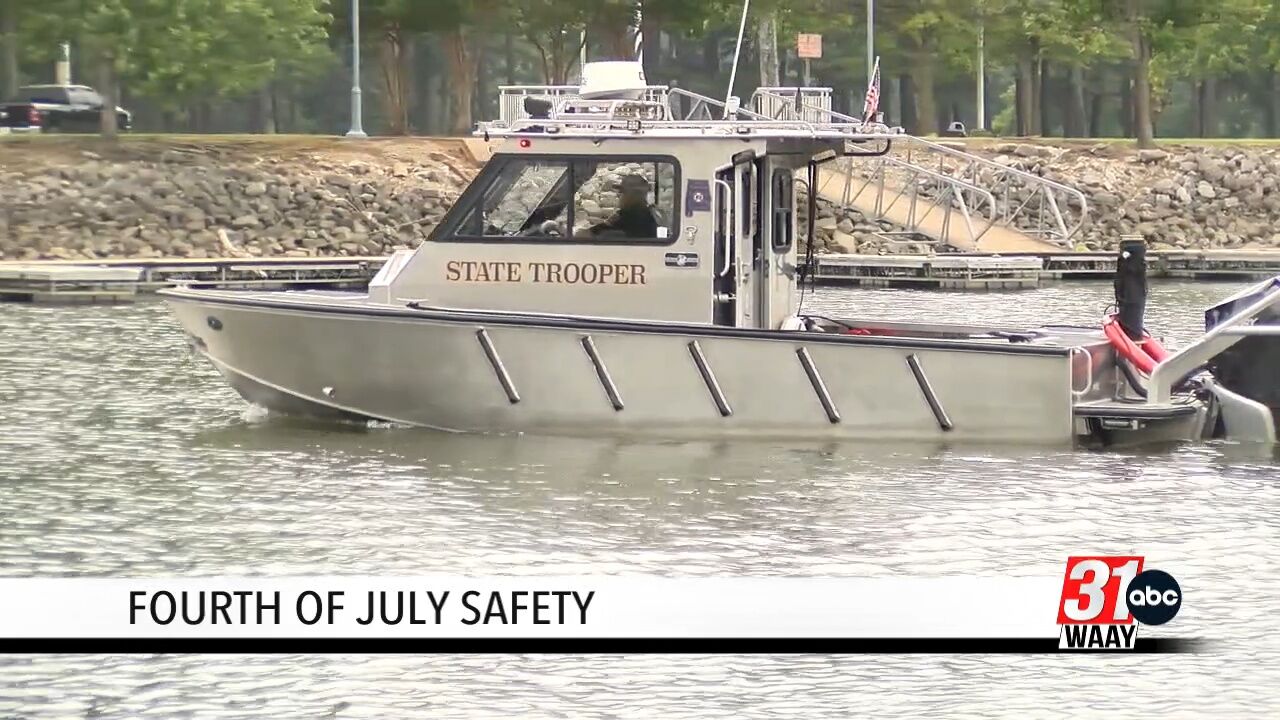
Overloaded in the Digital Age: Reflections on “Too Many Requests”
Every traveler has experienced a moment of pause—a split-second when life reminds us that we all have our limits. In our hyper-connected digital era, even a simple error message like “Too Many Requests” can feel like a mirror reflecting our modern existence. Instead of being merely a technical alert from a server, this message offers us a glimpse into the overwhelming nature of today’s travel planning. It speaks to a time when our constant connectivity leaves us bombarded with options, competing information, and a never-ending stream of potential experiences. Just as a system struggles to process too many orders at once, we sometimes find ourselves struggling to handle the multitude of travel plans, booking websites, and busy itineraries that modern life demands.
When you think about it, the message “Too Many Requests” is more than just a computer error—it’s a metaphor for the common modern dilemma faced by many travelers: the challenge of managing an overload in the digital age. Our journeys, both physical and virtual, are filled with twists and turns, tangled issues, and sometimes nerve-racking schedules. The error reminds us to pause and consider that sometimes less is more. In our pursuit of uncovering every possible destination or opportunity, we risk missing the breathtaking experiences that lie in the simple, well-planned moments of travel.
As I sit here reflecting on my recent planning endeavors, I can’t help but draw parallels between the overload experienced by servers and that which we, as adventurers, encounter. Whether it’s the constant barrage of travel recommendations or the sheer number of website requests to reserve a coveted campsite, the digital journey can sometimes feel as intimidating as the most challenging mountain trail. Yet, within this maze of detailed itineraries and online requests, there is a gentle reminder to slow down, prioritize, and truly savor each experience.
In the following sections, I invite you to join me in exploring how the lessons extracted from a simple error can be applied to our travel adventures. We will dig into the subtle parts of planning a memorable journey and get into the art of balancing an array of online requests with the need for genuine, quality experiences. Let’s take a closer look at how to figure a path through the overwhelming details and find joy in the simple pleasures of travel.
Understanding the Digital Overload: The Message Behind “Too Many Requests”
The phrase “Too Many Requests” might appear to be a straightforward error message from a server, but when examined from a travel perspective, it holds a wealth of meaning. In today’s world, where planning a vacation or an adventurous getaway means clicking through endless pages, it is all too easy to feel swamped by a flood of options, making your time and attention feel stretched thin.
In a way, our entire travel ecosystem is loaded with information—each click, scroll, and tap contributing to a cascade of data points. Whether you are booking a last-minute flight to a remote mountain resort or researching hidden trails in a national park, the barrage of online interactions can be as overwhelming as attempting to fit into a packed itinerary during peak vacation season.
Consider this table that summarizes common challenges encountered when planning travel in the digital age:
| Challenge | Description | Practical Tip |
|---|---|---|
| Information Overload | Scouring countless websites and reviews which can become confusing bits that impede decision-making. | Create a shortlist and prioritize trusted sources. |
| Multitasking Mayhem | Handling flight bookings, accommodation, and itinerary planning simultaneously. | Use dedicated apps and set aside time for each task. |
| Overwhelming Options | Too many potential safari tours, hiking trails, or beachfront resorts can leave one tired and uncertain. | Focus on key interests (nature, adventure, tranquility) to narrow down choices. |
This table isn’t just a list of grievances; it’s a reflection of the digital reality that so many of us face. In an age where every online search can lead to a few thousand results, the message “Too Many Requests” urges us to step back and reassess our approach. Just as one might need to take a break from constant connectivity, the message invites travelers to find balance and embrace purposeful planning rather than getting lost in the fine points of every digital twist and turn.
Workshopping your travel plans is something that requires managing your way carefully through a flood of inputs. A proactive yet relaxed method of travel planning suggests that taking the time to single out what matters is not only key but also immensely rewarding. By acknowledging that there is a natural limit to how many things can be effectively handled at once, one can learn to savor the journey rather than rush headlong into a chaotic itinerary.
Finding Your Path: Balancing Digital Demands with Real-World Adventures
In the same way a server can be overwhelmed by too many requests, many travel enthusiasts find themselves caught in an endless cycle of booking and cancellation—and sometimes, that very process can become off-putting. Instead of letting a deluge of digital obligations take over, it is essential to carve out time for the physical journey. There is a beauty in stepping away from the screen and immersing yourself in nature, where the challenges might be just as tangible but immensely more rewarding.
When planning your next outdoor adventure, it might help to view the digital landscape as the gateway to possibility rather than an endless stream of obligations. Take a closer look at the following ideas, which serve as stepping stones to rebalancing your focus:
- Prioritize Experiences Over Booking Speed: Instead of rushing through the endless pages of reviews and recommendations, create a personal checklist of what you truly value in an outdoor experience. Whether it’s the serenity of a quiet forest trail or the adrenaline of a rock climbing expedition, identify the experiences that resonate with your soul.
- Timetable Your Research: Allocate a set amount of time for researching online—this could be an hour or two each day. This way, you ensure that the research phase doesn’t spiral into a repetitive cycle of overwhelming requests.
- Break Down the Process: Work through your travel planning by compartmentalizing tasks. For example, handle flight and transportation arrangements as one block, then dedicate another segment to accommodations, and finally to activities and dining options. This approach helps you find your way through the multifaceted planning process by reducing each task to manageable pieces.
Borrowing ideas from the world of outdoor adventure, the notion of “taking the wheel” can translate into direct action. Just as experienced hikers and climbers learn to identify landmarks that guide them along less congested trails, you too can figure a path through the digital noise by isolating and focusing on what matters most. This technique can transform your travel planning from a nerve-racking series of competing demands into a strategic expedition where every step counts.
There is an undeniable thrill that comes with taking control of your itinerary. When you shift the focus from simply reacting to prompts like “Too Many Requests” to actively crafting your journey, you create a space where creativity and careful planning can flourish. The journey becomes less about handling complications and more about enjoying each moment, both online and off.
Exploring Hidden Gems: Off-The-Beaten-Path Adventures for the Modern Traveler
One of the greatest advantages of living in a digital world is the ready access to a plethora of travel ideas. But therein lies a catch—too many options can often leave us bewildered about where to start. Even so, the digital realm presents an amazing opportunity to discover hidden gems that are often tucked away from the usual tourist routes.
Imagine planning a trip that focuses on lesser-known hiking trails, quaint family-friendly camping spots, or a secluded lakeside retreat where nature sings in the quiet of dawn. Instead of getting lost in a maze of booked-up destinations, consider the charm of venturing off the beaten track. The internet offers long-tail suggestions like “peaceful nature retreats in remote mountain areas” or “hidden lakeside camping experiences away from the crowds.” These search queries help you get into the nitty-gritty of planning an escape that is both refreshing and intimate.
Here are some ideas to help you discover off-the-beaten-path adventures:
- Local Blogs and Community Forums: Instead of relying solely on big travel sites, dive into local blogs and online communities where seasoned travelers share their favorite hidden spots. These resources often contain the subtle details and little twists that can truly elevate your journey.
- Cultivate a Sense of Curiosity: Rather than being overwhelmed by popular destinations, let your curiosity drive you to find unique locales. Sometimes, the best experiences come from asking locals and exploring areas that aren’t featured in the mainstream travel guides.
- Use Specialized Search Terms: When planning your adventure, experiment with detailed search phrases like “secluded hiking trails in [region]” or “quiet camping spots for families near [destination].” These queries can help steer you away from touristy options and into a realm of genuine discovery.
The journey to unearth such hidden treasures is undeniably exciting and offers a counterpoint to the endless digital requests we sometimes face. Instead of feeling overwhelmed by a cacophony of travel data, you can focus on a curated selection of destinations that truly resonate with your interests. This process not only makes the planning phase more enjoyable but also heightens your on-site experience as you connect with locations that are rich in authenticity and natural beauty.
There is a certain magic in discovering that quiet lakeside clearing or an overlooked hiking path that reveals scenic vistas. It is in these moments, when you’re off the known trails and away from the clamor of the mainstream, that travel truly transforms into an art form—a balanced blend of digital research and raw, experiential engagement with the natural world.
Finding Balance: Integrating Technology and Nature in Travel Planning
Our digital tools have become double-edged swords in the realm of travel planning. On one hand, they empower us to find the best deals, reviews, and unique opportunities at our fingertips; on the other, they can bombard us with a relentless influx of information. It becomes a tricky balancing act to respect the convenience of digital technologies while preserving the soul-soothing pleasure of being immersed in nature.
Here are some practical strategies to integrate technology with the great outdoors without getting overwhelmed:
- Set Boundaries: Allocate specific hours for online research and stick to those times. Once your research is done, commit to detaching from the digital screen and enjoying the natural setting.
- Download Offline Maps and Guides: Prepare for your journey meticulously by downloading maps that work offline. This small twist in your planning can help you avoid being too reliant on continuous internet access, ensuring that you stay connected to the landscape around you rather than the endless list of online notifications.
- Embrace Digital Detoxes: Consider designating parts of your trip as technology-free periods—an opportunity to truly connect with the physical world around you.
Managing your way through travel planning requires an honest assessment of your personal relationship with technology. For many, the lure of constant connectivity can lead to a compulsive need to check and recheck travel itineraries, only to fall into the trap of overthinking every decision. Instead, try to approach your journey with a mindset that values both digital convenience and the primal pleasure of being outdoors. Taking the wheel means learning when to click “Book Now” and when to simply step away, breathe, and let nature reclaim your attention.
The ability to sort out the delicate balance between technology and nature is not only soothing but also enriches your overall travel experience. When you set aside enough time to unplug, you grant yourself permission to be fully present—a key component in rediscovering the authenticity of travel. The lesson here is clear: you can make use of technology, but it is equally important to remember that real adventure happens when your eyes, ears, and heart are tuned to the subtle details of the world around you.
Strategies for Effective Outdoor Recreation Planning
Travel planning can sometimes feel like an endless stream of evaluations, each decision loaded with issues and potential complications. Whether you’re mapping out an extensive hiking expedition or planning a cozy weekend camping trip, the process often involves managing conflicting inputs and figuring a path through a myriad of factors. Here are some down-to-earth tips designed to help you stay focused and organized:
- Create a Master Itinerary: Write down every detail of your trip in a notebook or digital document. Segment your plan into manageable parts—accommodation, transportation, meals, and activities. This helps to avoid the tangled issues that come with trying to remember everything on the fly.
- Embrace Flexibility: While detailed planning is helpful, leave room for spontaneous adventures. Some of the best travel memories are made when you deviate from the predetermined schedule, taking the wheel to explore unexpected opportunities.
- Utilize Community Resources: Local tourism boards, online travel forums, and even social media groups can be a treasure trove of experiential wisdom. These networks offer a chance to get into the nitty-gritty of travel planning without feeling overwhelmed by professional advice that might be too abstract or generalized.
- Prepare for the Unexpected: Much like a server that can only process so much data, your travel plans are susceptible to unforeseen delays or issues. Equip yourself with contingency options such as alternative routes, additional travel funds, or backup accommodations. This way, no matter how loaded with issues your situation becomes, you’ll be ready.
Often, the process of travel planning is riddled with subtle details and little twists, each demanding your attention. By breaking down your plan into bite-size portions and adopting a flexible, research-backed approach, you not only tame the overwhelming cascade of online requests but also pave the way for a smoother journey. Thinking of it as a balancing act that blends creativity with a pragmatic approach can transform what might have seemed like nerve-racking logistics into an enjoyable part of the adventure.
Like any great expedition, the key to successful travel planning lies in preparation, but also in the freedom to adapt once you’re on the ground. Trust in the process, take your time to appreciate the intricate pieces of planning, and soon you’ll find that the balance between digital research and genuine experience is not only manageable—it’s downright enjoyable.
Embracing the Unexpected: Lessons from a Digital World
In this era of constant online updates, it’s easy to miss out on the inherent beauty found in spontaneity. The very idea of “Too Many Requests” provides a lesson that transcends the technical realm—it shows us that sometimes an overload can lead to unexpected opportunities. Instead of worrying about every detail and getting bogged down in the nerve-racking process of managing countless online inputs, allow yourself the freedom to be flexible and present.
Consider taking a break from the steady bombardment of emails, notifications, and travel promotion pop-ups. Set aside a day or even an afternoon to disconnect and truly explore the spontaneous joys of travel. Whether it means joining a local guided hike without an intricate plan or stumbling upon a quaint café while wandering through historic streets, these unplanned moments form the essence of genuine travel experiences.
Moreover, embracing the unexpected means recognizing that not all travel revelations can be scheduled. Sometimes, it’s the subtle parts—the sound of rustling leaves on a forest trail, the little details of local culture, or the chance encounter with a fellow wanderer—that create the most lasting memories. When technology floods you with an overwhelming number of possibilities, remember that you can always trust your instincts to guide you to the next adventure.
To support a balanced approach that celebrates the unplanned, try these simple yet effective ideas:
- Keep a Travel Journal: Document your journey with notes and sketches. This practice not only helps capture the spontaneous moments but also encourages you to step away from the digital screen and engage with your surroundings.
- Practice Mindful Exploration: Set an intention to be present during your travels. Whether you’re navigating a bustling market or a serene mountain path, focus on the sensory experiences that make each moment distinct.
- Schedule Unstructured Time: Alongside your detailed itinerary, deliberately leave gaps in your schedule where nothing is planned. These moments of free time can lead to surprising discoveries and authentic connections with the place you are visiting.
In embracing the unexpected, you learn that every journey comes with its own rhythm—a rhythm where digital overload transforms into a gentle reminder to pause, observe, and appreciate the nuances of life. This switch from constant digital communication to genuine human experience is one of the most liberating aspects of travel, allowing you to truly get into the heart of an unfamiliar place without feeling burdened by too many requests.
Conclusion: A Call to Mindful Exploration and Simplified Journeys
At its core, the enigma of “Too Many Requests” is not just about a technological hiccup—it’s a call to reassess the way we approach life and travel. In an era where every click brings a new possibility, we are often left sorting out countless details that can distract us from the true essence of our adventures. Instead of feeling overwhelmed by the flood of online interactions, we can choose to figure a path that harmoniously blends careful planning with the beauty of spontaneity.
By rethinking our travel methods, we learn to manage things one request at a time—whether it’s organizing a family-friendly outdoor adventure, exploring scenic mountain retreats, or simply taking a quiet moment of reflection after a busy day on the road. Embracing the unexpected allows us to appreciate the little details, recognize that every twist and turn can hold a unique treasure, and ultimately enjoy a more fulfilling travel experience.
Technology, with its countless conveniences as well as its complications, will always be a part of our journeys. However, the true essence of travel lies in our ability to get away from the overload and rediscover the timeless pleasures of nature. It is in these moments—when you set aside the digital world to immerse yourself fully in the present—that you uncover the real magic of exploration.
This call to mindful exploration is an invitation for all travelers: to slow down, set realistic expectations, and let the journey unfold naturally. Whether you’re planning an epic expedition or simply a weekend retreat into nature’s serenity, remember that while the digital landscape may be loaded with issues, the physical world offers endless opportunities for personal enrichment and genuine adventure.
So, the next time you encounter that simple message—“Too Many Requests”—let it serve as a reminder to pause, breathe, and reconfigure your approach. Instead of succumbing to the overwhelming sea of digital demands, use it as a cue to design a travel experience that is as thoughtful as it is spontaneous, as planned as it is unpredictable. In doing so, you transform an error message into a life lesson—a powerful metaphor urging you to appreciate each moment and make every journey count.
Originally Post From https://www.alexcityoutlook.com/july-4-traffic-and-boating-enforcement-results/article_e2d1921c-fbee-4594-85e3-21b59159d602.html
Read more about this topic at
What is the deal with “Rate Limit Exceeded” on twitter?
How to Fix Your Twitter Rate Limit Exceeded Error Message


